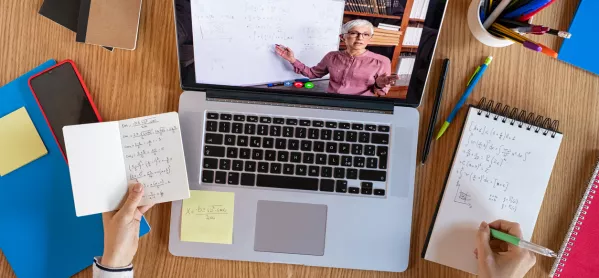The government has told us that schools will be among the last things to close in future lockdowns. Hopefully, that means our doors will never shut again due to Covid-19.
But if 2020 has taught us anything, it’s to be prepared for the unexpected.
We do not know what the autumn will hold, and there is a risk that we face local, or even national, lockdowns. Here’s how we can start preparing:
1. Prioritise routine and structure
Children rely on school to bring routine and structure to their lives. This structure is even more important when the rest of their lives are disrupted. Think about how you can keep some of the routines of school life, such as assemblies and form time.
2. Decide how to teach
The research we’re seeing about increases in attainment gaps is terrifying. We need to keep teaching our children through any closure, and we need that teaching to be high quality. You need to decide:
- How much work will there be in a day? For younger year groups where this needs to be parent-mediated then this might be less normal.
- Will work be online or offline? The flexibility and interactivity you get from online cannot be beaten by the best workbook, but it presents its own logistical problems.
- Will online lessons be live or recorded? There are fans of both camps. What’s best really depends on the reliability of your students’ internet connections.
- What content will you use for lessons? Staff can make their own lessons, or you could use pre-existing ones. The latter will mean more time to focus on supporting students who are struggling.
- How will you track student work and give feedback? This needs to take into account the reduction in staff capacity that comes from teachers having their own children at home in a lockdown.
Read more:
3. Plan for different tech capabilities
For our students, I’m planning to keep our secondary school on its usual timetable and run lessons through Google Classroom.
We are issuing a Chromebook to children who don’t have a device at home and arranging internet for those without it. We’ll use Oak National Academy lessons where they align closely enough with our curriculum - freeing up staff to focus on support and feedback.
4. Plan for those who could struggle
We know that some children found lockdown easier than others. If you’re a child with low literacy levels, remote working, where everything is written rather than spoken, is a huge challenge.
Make sure you know who could struggle and who is responsible for supporting them. It would also be wise to also use every capability of the technology like breakout rooms on video calls to be able to provide teacher assistant support.
5. Tell people what you’re planning
Your school community needs to know that you’re prepared. Of course, we hope that we are never told to close, but parents and students will be worried about what happens if we are. Give them confidence from the start of the year by telling them the highlights of your plan.
6. Put the training in now
If we do have a lockdown it’s likely to come with little notice. Once you have your plan, you should make sure students, staff and parents are all aware of what they will need to do.
If parents and students know what needs to happen on the first morning of a lockdown then your life will be much easier.
7. Remind your students that they can do this
Children take their cue from adults. If we enter lockdown in a panic, they’ll panic. Communicate again and again how much you’ve got this under control, and are looking out for them.
I would also remind them that they’ve already got through this once and will get through it even better the second time.




